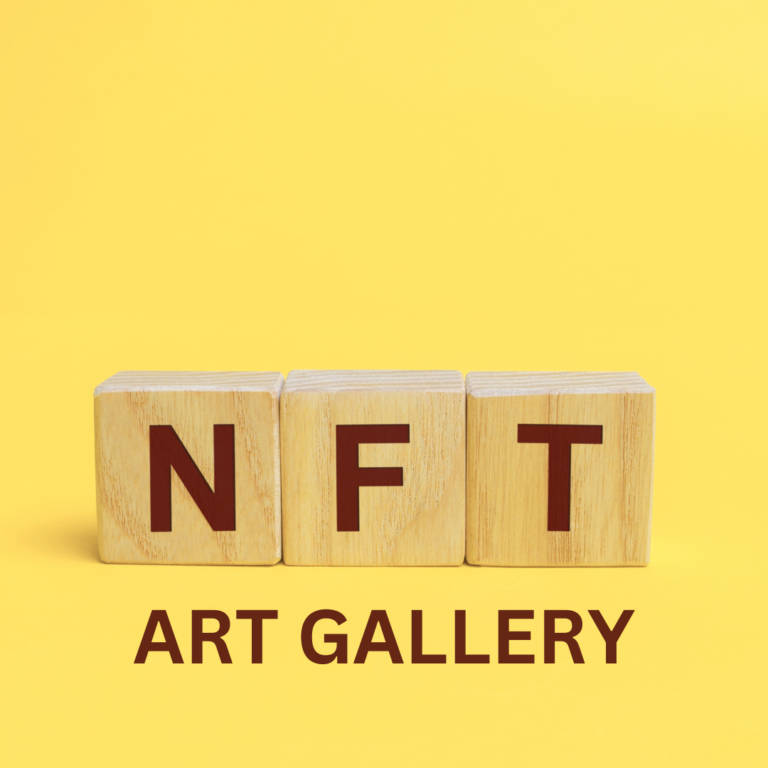NFTs (Non-Fungible Tokens) have revolutionized the art world by providing artists with a digital-first approach to selling unique artworks. As the demand for digital collectibles continues to grow, launching an NFT art gallery can be a highly profitable business opportunity.
This guide will take you through how to create an NFT art platform where artists and collectors can buy and sell digital art, including startup costs, marketing strategies, monetization models, and the latest trends in the NFT space.
Why Start an NFT Art Gallery?
NFTs have changed the way digital art is valued and traded. Unlike traditional images, an NFT is verified on the blockchain, making it unique, traceable, and secure.
Key Benefits of an NFT Art Gallery Business
- Global Market – Sell to collectors worldwide without geographical restrictions.
- Direct Earnings for Artists – Smart contracts allow artists to earn royalties on resales.
- Low Overhead Costs – No need for physical storage or shipping of artworks.
- Growing Adoption – NFTs continue to gain mainstream interest.
By creating an NFT marketplace or art gallery, you can position yourself at the center of this digital art revolution.
Step-by-Step Guide to Launching an NFT Art Gallery
Define Your NFT Gallery Business Model
There are three primary business models for NFT art marketplaces:
- Curated NFT Art Gallery – You handpick high-quality digital artworks from selected artists. Focus is on rarity and prestige, similar to traditional art galleries.
- Open Marketplace for Artists – Any artist can list their NFTs for sale, and you earn transaction fees per sale.
- Hybrid Model – Combination of curated and open NFT listings, with featured artists getting premium visibility.
If you are targeting high-end collectors, a curated gallery is better. If you want high traffic and volume, an open marketplace will be more scalable.
Choosing the Right Blockchain and Smart Contracts
Your NFT platform needs a blockchain to store transactions securely.
- Ethereum (ETH) – Most popular, strong NFT ecosystem (OpenSea, Foundation).
- Solana (SOL) – Lower fees and faster transactions (Magic Eden).
- Polygon (MATIC) – Cheap transactions, ideal for newcomers.
- Tezos (XTZ) – Eco-friendly blockchain for sustainable NFTs.
Smart contracts should follow standards like ERC-721 (Ethereum NFTs) or SPL (Solana NFTs) to create unique, traceable digital artworks.
Setting Up Your NFT Art Platform
NFT Marketplace Development
- Custom-Built Platform – Use React, Solidity (Ethereum), or Rust (Solana).
- White-Label NFT Marketplace Solutions – Faster and cost-effective (examples: Rarible Protocol, Mintbase, NFTify).
- No-Code NFT Platforms – Use platforms like Mintable or OpenSea storefronts.
Key Features to Include
- User Profiles and Wallet Connection (MetaMask, Phantom, Trust Wallet)
- Art Listing and Bidding System
- Smart Contracts for Royalties (10%–15% commission for artists)
- IPFS Storage for Digital Artwork
- Gas Fee Optimization (Layer 2 scaling solutions like Polygon)
Cost to Develop an NFT Art Platform
- Basic: $10,000 – $20,000 (using white-label solutions).
- Custom: $50,000 – $150,000+ (full-scale NFT marketplace).
Monetization Strategies: How to Make Money from an NFT Gallery
Your NFT gallery should have multiple revenue streams to maximize profitability.
- Transaction Fees and Commissions – Charge 2.5% – 5% commission on every NFT sale.
- Artist Listing Fees – Charge a fixed fee for premium listings or featured spots on the homepage.
- NFT Minting Fees – Offer “Lazy Minting,” where artists pay a small fee to create NFTs.
- Secondary Market Royalties – Every time an NFT is resold, artists and your platform earn royalty fees (5-10%).
- Exclusive NFT Drops and Memberships – Sell premium memberships where collectors get early access to NFT drops.
Marketing Your NFT Art Gallery
Once your platform is live, you need effective marketing strategies to attract artists and collectors.
NFT Community Engagement
- Twitter and Discord – Most NFT projects thrive on these platforms.
- Reddit (r/NFTs, r/CryptoArt) – Promote in NFT and crypto forums.
- NFT Influencer Collaborations – Work with YouTubers and NFT artists.
- Telegram and Clubhouse – Live discussions and AMA (Ask Me Anything) sessions.
SEO and Content Marketing
- Blogging – Write articles like “Top 10 NFT Artists to Watch” or “NFT Investment Guide.”
- Video Tutorials – YouTube guides on “How to Sell NFT Art” can drive massive traffic.
- SEO Optimization – Rank for keywords like “buy NFT art,” “NFT marketplace,” etc.
Paid Ads and Influencer Marketing
- Google Ads and Facebook Ads – Target crypto and art enthusiasts.
- Influencer Giveaways – Offer free NFTs for viral marketing campaigns.
The best strategy is building an engaged NFT community rather than relying only on paid ads.
Challenges and How to Overcome Them
While NFT marketplaces are profitable, there are challenges you should prepare for.
- High Gas Fees – Solution: Use Layer 2 solutions (Polygon, Optimism) for cheaper transactions.
- Competition from Big Players (OpenSea, Rarible) – Solution: Find a niche, for example, “NFT gallery for surrealist digital artists.”
- NFT Scams and Fake Art – Solution: Implement an artist verification process and AI-powered fraud detection.
Future of NFT Art and Expansion Strategies
The NFT industry is rapidly evolving. To stay ahead, consider these expansion opportunities:
- NFT + Metaverse Integration – Sell NFTs in virtual galleries (Decentraland, The Sandbox).
- AI-Generated NFT Art – Use AI tools (DALL·E, DeepDream) to create unique NFTs.
- 3D and AR NFTs – Augmented Reality NFTs are the next big trend.
Conclusion
Starting an NFT art gallery is an exciting business opportunity in the booming digital economy. By combining blockchain technology, artist engagement, and smart marketing, you can build a successful NFT platform that attracts collectors and artists worldwide.
Key Takeaways
- Choose a niche (curated or open marketplace).
- Select the right blockchain (Ethereum, Solana, Polygon).
- Monetize through commissions, memberships, and royalties.
- Engage in NFT communities (Twitter, Discord, Reddit).
- Adapt to future NFT trends (Metaverse, AI, AR NFTs).
Now is the perfect time to launch your NFT art gallery. Start planning and take action today.



